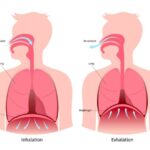Waking up with a “kink in your neck” is never the way to get the day off to a good start. I, myself, have woken up with this problem on more than one occasion. More often than not this can be a very preventable problem when adhering to proper sleep postures and positioning. But if you do find yourself in such a situation there are a few home exercises that can help drastically reduce the stiffness in your own neck and even prevent future mishaps.
Axial elongation with resistance
So many of us are caught up in the world of a forward head and rounded shoulder posture and is unfortunately a consequence of modern day living but that doesn’t mean it has to be. The term axial elongation refers to essentially a lengthening of the back of one’s neck which is often shortened with forward head posture particularly the area of the neck just under the back of the skull. One way to combat this is to position yourself on your back and then proceed to gently nod your chin down towards your chest as if you were to nod “yes”. Then, with your fist, give a gentle push into your chin and do not allow your chin to move. Maintain a prolonged hold with this position (30-60 seconds) or until you fatigue out. The goal with this is to help facilitate the core musculature of your neck which are often deconditioned especially those who suffer from headaches.

1st rib self-mobilization with strap/towel
If you are a side-sleeper and especially favor one side and are not using proper pillow support, you may run the risk of causing an elevated 1st rib. This bone lays just underneath your trap muscles and so often can be the culprit for many neck issues. To help reduce this elevation and improve mobility and function of your neck all you’ll need is a towel, belt or your standard yoga strap. In sitting, have the strap draped over your shoulder and be sure it is snug against the base of your neck and gently side bend your head toward the strap to put all the soft tissue on slack. Then, provide a gentle downward force toward the ground with both hands with the strap and maintain this as you side bend your head away from the strap toward the opposite side. Repeat this head motion several times.
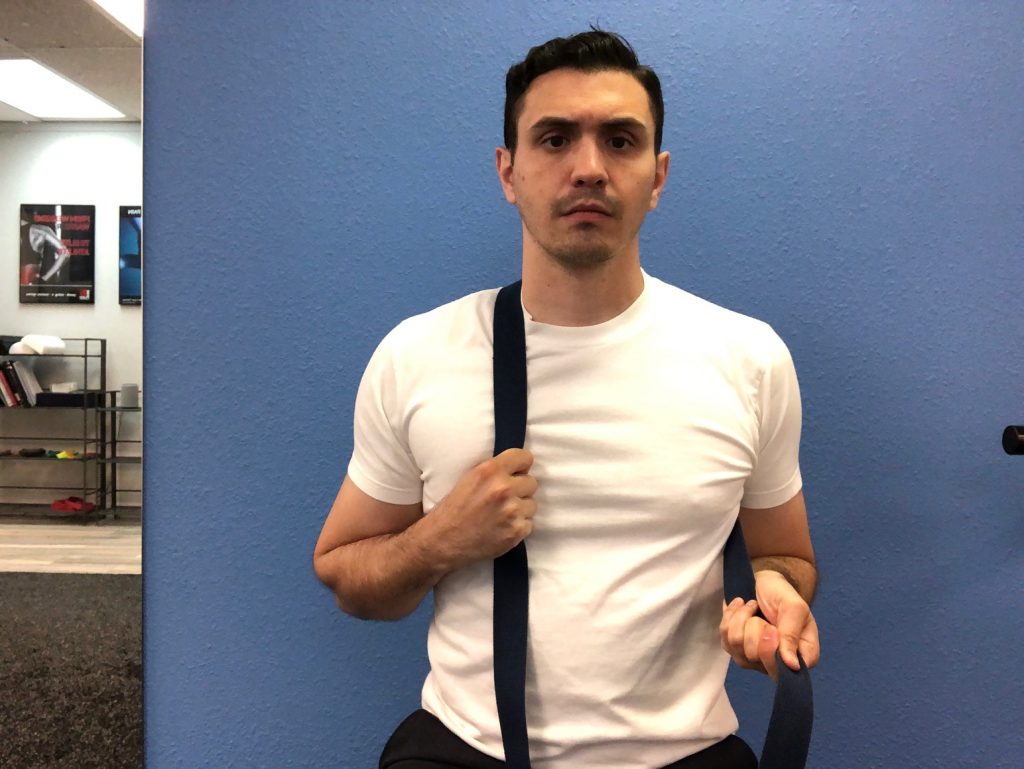
Step 1 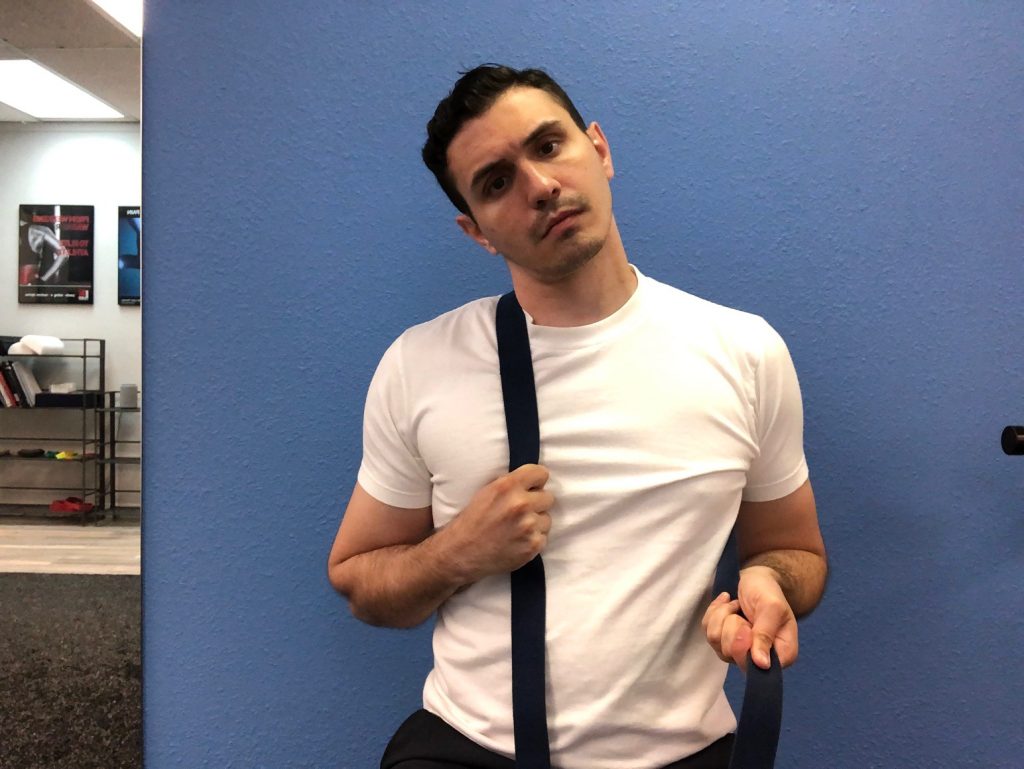
Step 2 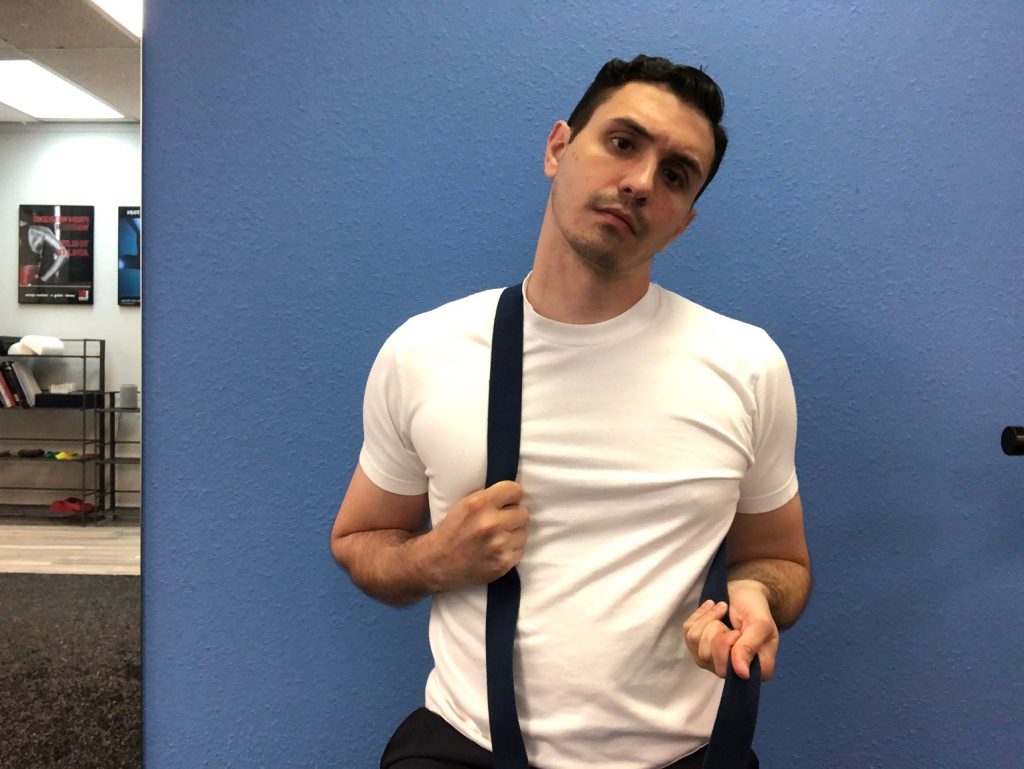
Step 3
Note: There should not be an increase in pain, numbness or tingling into the arm or hand.
Upper thoracic spine mobility
We need rotation and extension available in the upper thoracic spine for proper function of the cervical spine. A stiff upper thoracic spine can theoretically lead to hypermobile, or even unstable, areas in the cervical spine which can lead to acute locking or stiffness of the neck.
For rotation left, use the fingers of your right hand to grasp onto the left side of your spine just below the base of your neck. Then, shift your weight onto your right hip while simultaneously turning to look to the left as if you where to look behind you and pulling with your fingers your spine to the right.

Step 1 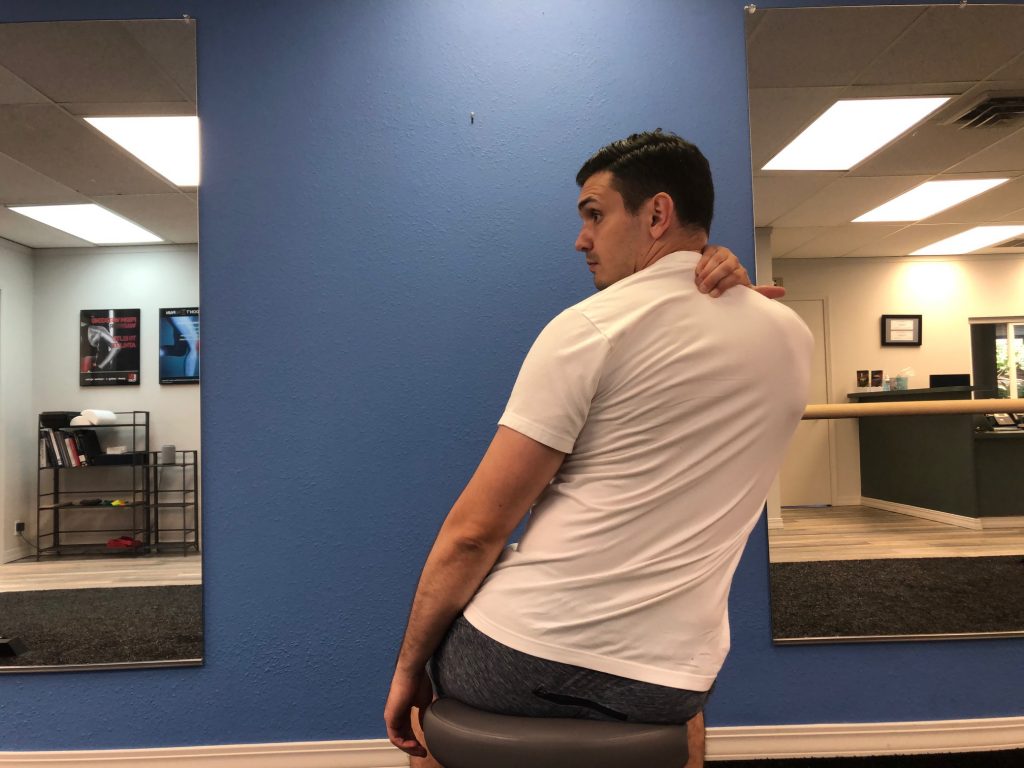
Step 2
Disinhibition Series
The is the name of an exercise we use often to help facilitate the core muscles of the neck just as we do with Axial Elongation. However, while the first exercise targets the core muscles of the front, this exercise targets the core muscles of the back of the neck and can even be used to target a specific level of the neck, preferably the spot that feels the weakest to you.
Again, lay on your back and bend your knees. Take the same strap as used for your rib mobilization exercise and have it wrapped around the back of your neck and both hands holding up the strap on either side toward the ceiling. Next, assume the axial elongation posture previously mentioned and start to give a gentle and gradual pull on the strap straight toward the ceiling and resist with your neck not allowing it to come out of the elongated position. The strap should be placed at the area of the neck you feel the weakest. Prolonged holds of 30-60 seconds or until you start to feel stronger with your neck. This exercise can help reinforce the axial elongation posture mentioned earlier.
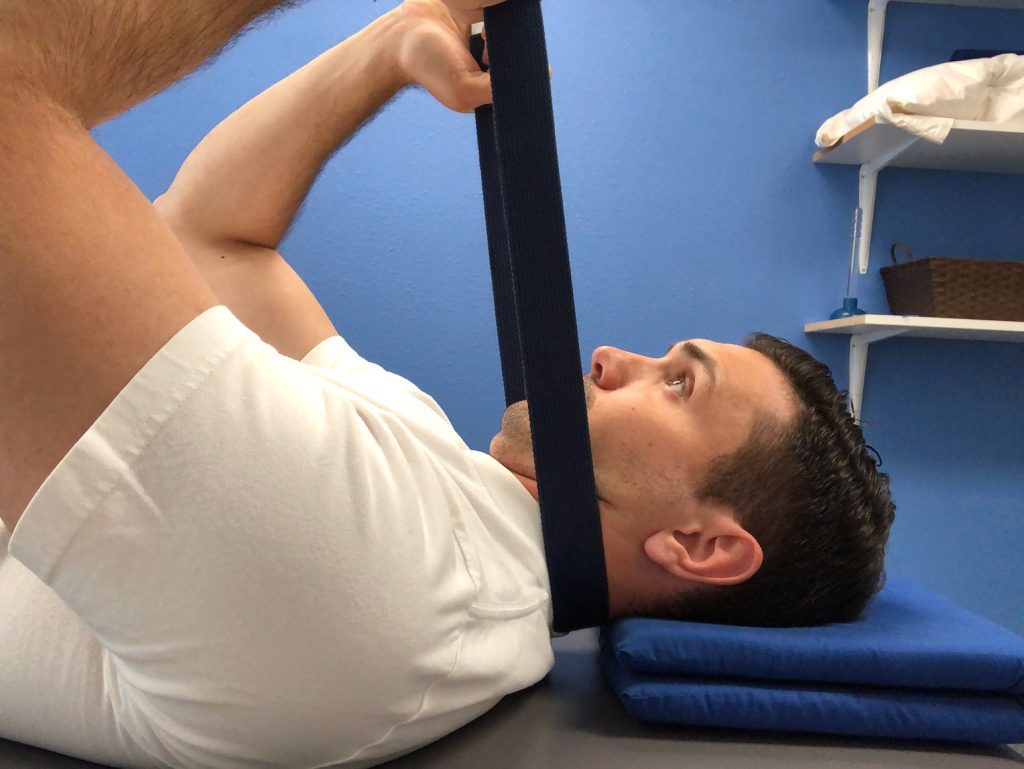
Ligamentum Nuchae self-mobilization
The Ligamentum Nuchae is an anatomical structure the runs up the middle of the back of your neck and another structure of the neck that can become over-shortened and thus tight with a forward head posture. To help mobilize and thus help loosen this structure imagine grabbing the scruff of your neck. To make this easier extend your head backwards and pinch the back of your neck. Once you have a comfortable grip on these soft tissues you can move your head around into various directions typically finding the one direction that is toughest to get into in order to address the greatest restriction.
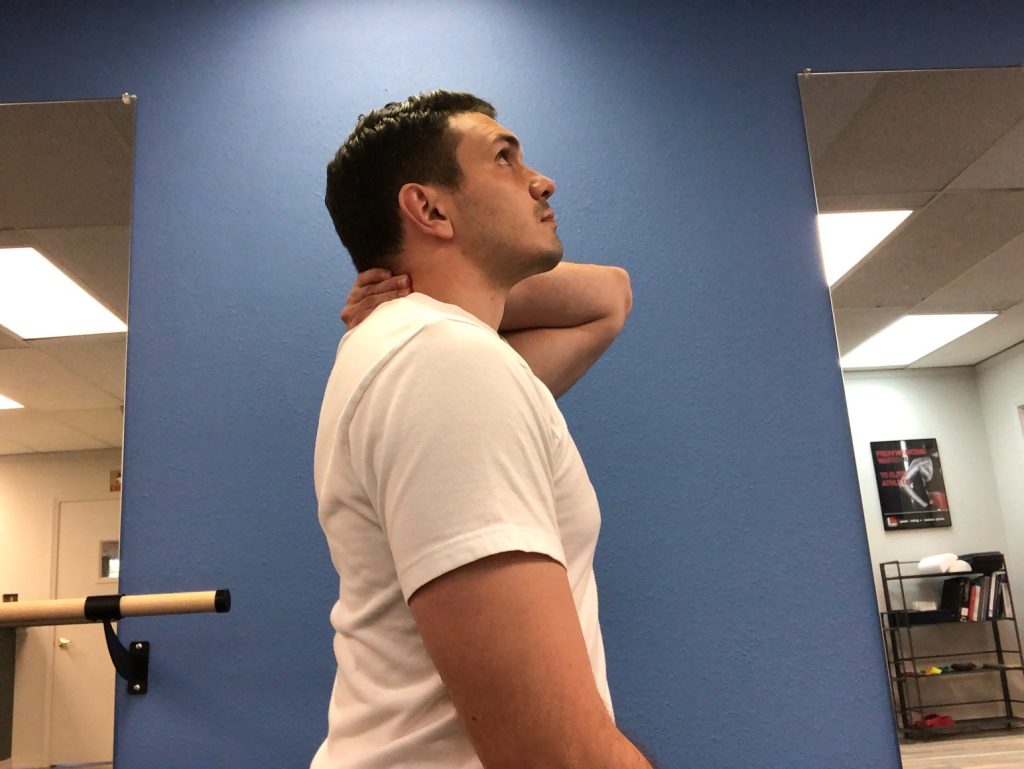
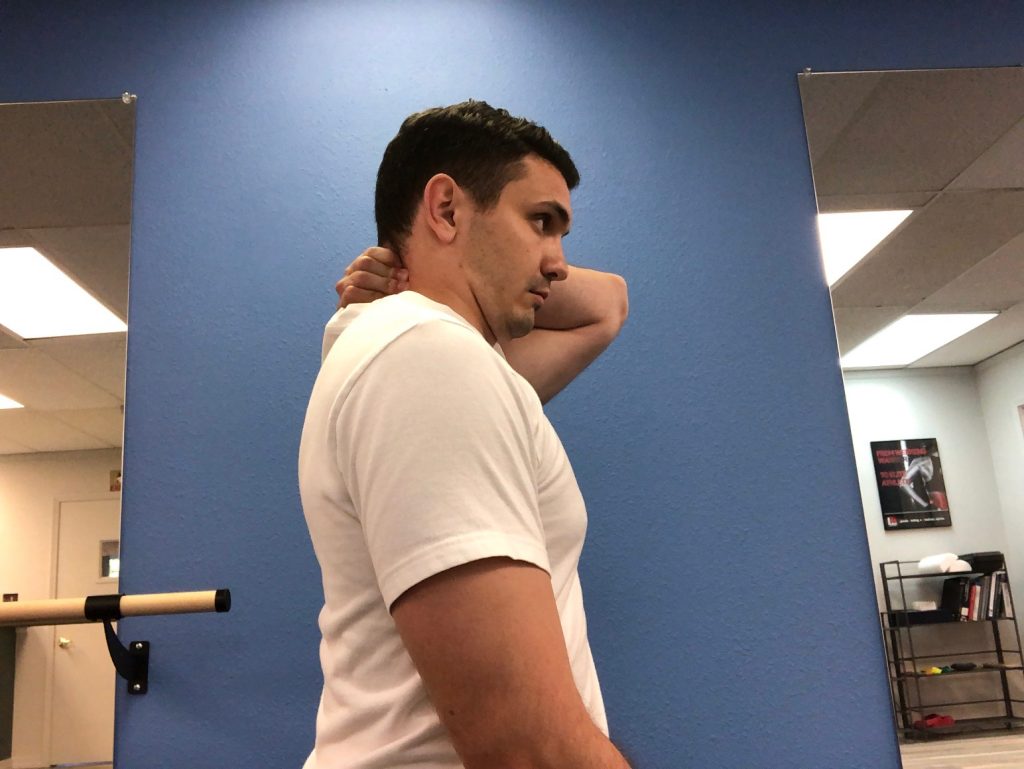
Step 2
With these exercises you will be able to promote a healthier and more functional cervical spine and even reduce the risk of stiff episodes in the future. If symptoms do not resolve or you feel you need additional care be sure to see a Certified Functional Manual Therapist at an IPA Physio clinic.




